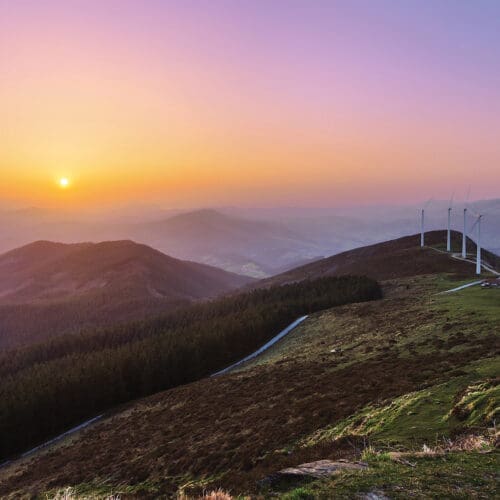Great Power, Great Responsibility: Reusing and Replacing – Wind Turbines at End-of-Life
October 2023Hinkley Point C, which on completion will be Britain’s first newly-built nuclear power station for thirty years, will be designed to generate power for 60 years. Most gas-fired power stations are designed to do so for 30 or more years.
By contrast, modern wind turbines typically have design lives of 20 or 25 years, and early turbines were often limited to 15-year design lives. This means that the first generation of wind turbines in Britain and other early adopters, principally located onshore, have over the past few years been coming to the end of their design lives. That in turn leaves open the question of what to do with them now.
Setting Up
In the early days of wind power in Britain, in the early- to mid- 2000s, it was comparatively easy to erect turbines onshore, and indeed both small and large-scale wind farms were often established in prime locations near centres of demand and existing grid connections. The principal barrier was the cost of the turbines themselves.
As time went on local objections, and an evolving planning regime which gave increasing weight to those local objections, made it progressively more difficult to establish wind farms onshore (at least in England; the Scottish government chose to implement a more permissive regime). The principal barrier to construction of onshore wind quickly became the planning regime, and many commentators considered that regime ultimately to have evolved into a de-facto ban. All of this culminated in just two onshore wind turbines being erected in the whole of England in the year 2022.
The British government is now seeking to ease the planning burden, although it is almost inconceivable that the permissiveness of the 2000s will return. What this means is that owners of the vast majority of onshore wind turbines in England are sitting on assets that simply could not be built today, and that makes them extremely valuable. That is particularly so at today’s energy prices.
Out with the Old?
The temptation, then, is to simply carry on operating these turbines for as long as possible or, as has been extensively suggested in the press, to upgrade them by increasing blade lengths and, so, turbine heights. However – as is often the case – it isn’t that straightforward. Owners and operators need to be wary of doing either of those things.
When the first generation of onshore wind turbines were constructed, knowledge of the relevant design considerations was in its infancy. On some particularly early projects the engineering analyses carried out were those relevant to static structures – i.e. disregarding the cyclical motion of the blades and the stresses that this motion, in conjunction with the prevailing wind, would cause on the rest of the structure through the hub – and construction was carried out in accordance with those deficient analyses.
There have been very few significant failures of wind turbines in Britain. In part, this is due to both conservativeness and over-specification at the front-end and to implementation of ongoing monitoring and remediation regimes, where appropriate, throughout turbines’ design lives.
Checks and Balances
However, when considering operating a turbine beyond its originally specified design life or replacing it with a higher-capacity turbine (which will inevitably result in greater stresses), careful thought must be given to the design and construction of all existing parts of the structure, including the foundations.
It is therefore essential that owners commission full reviews of any assets that they intend either to carry on operating beyond their original design lives or to ‘upgrade’ in any way. It is equally essential that these reviews are carried out on the basis of appropriate and balanced contractual terms.
On the one hand, the asset owner will want proper assurance that its turbines are not going to fall over in short order. On the other hand, the consultant carrying out the review will not want to simply adopt liability for an existing design in its entirety – noting that, given the elapsed time, any claim against the original designer will almost certainly be time-barred.
The right approach will be somewhere in the middle, and will depend on what the parties are actually looking to achieve. For example, the designer of a scheme to install upgraded turbines carrying a fresh 25-year design life will clearly need to be prepared to take on rather more liability than an engineer reviewing an existing design to determine whether an extra 3 years of operation can be safely squeezed out of an unmodified existing structure.
For that reason, neither employers’ nor consultants’ standard contract terms are likely to be entirely suitable, but rather, the terms of the consultant’s appointment should be tailored for each project. It must be drafted in light of the facts on the ground and having regard to the purpose of the exercise and the ultimate aim for the structures in question – otherwise, there is a risk that it simply will not be up to the job.
If you would like further information or assistance in relation to the issues set out above, please do get in touch with us.
Download PDF







